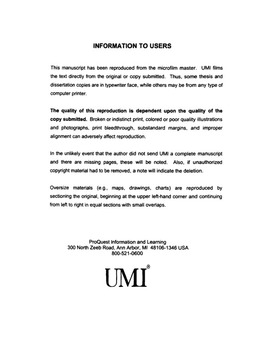| dc.contributor.advisor | Elugardo, Reinaldo, | en_US |
| dc.contributor.author | Montgomery, Brint Alan. | en_US |
| dc.date.accessioned | 2013-08-16T12:18:46Z | |
| dc.date.available | 2013-08-16T12:18:46Z | |
| dc.date.issued | 2002 | en_US |
| dc.identifier.uri | https://hdl.handle.net/11244/509 | |
| dc.description.abstract | In this work I argue that the two hemispheres of a split-brain patient exhibit consciousness and personhood while the patient operates under the conditions of a "Sperry-type" experiment. I am particularly concerned to show this to be the case for the right hemisphere. To this effect, [ argue that the right hemisphere has functionally distinct modules of cognition and sentience of the sort detailed by our most current theories in cognitive science. Moreover, practically all of the behavioral outputs for all modes of communication available to the right hemisphere (keeping in mind that speech is not one of these modes) are best explained by there being a superset of modules that maintain a degree of consciousness under Sperry-type experimental conditions. Such consciousness is outlined in terms of higher-order monitoring relations between modules. | en_US |
| dc.description.abstract | I further defend an ancillary thesis that under said conditions the right hemisphere is a person. I argue that anything that has conscious mental states over time has a unity of consciousness; furthermore, that which is identified as having a unity of conscious is a subject of mentality. But since I define a person just as a subject of unified consciousness over time, and since the right hemisphere is shown by the main thesis to have conscious mental states, I conclude it must also be accounted a person. My argument would likewise apply to the left hemisphere. In addition to this, I argue that one can speak meaningfully of a single subject of mentality initially fissioning into two subjects of mentality and then subsequently re-fusing back into a single subject of mentality without sacrificing our standard views of how our minds are related to our brains. To effect such an argument, I offer up Individuation Theory as a theoretical structure which can more reasonably account for Split-brain phenomena than any of the currently available contenders. | en_US |
| dc.format.extent | ix, 231 leaves : | en_US |
| dc.subject | Psychology, Psychobiology. | en_US |
| dc.subject | Brain Philosophy. | en_US |
| dc.subject | Philosophy. | en_US |
| dc.subject | Cognition. | en_US |
| dc.subject | Psychology, Cognitive. | en_US |
| dc.subject | Consciousness. | en_US |
| dc.subject | Identity (Psychology) | en_US |
| dc.title | Consciousness and personhood in split-brain patients. | en_US |
| dc.type | Thesis | en_US |
| dc.thesis.degree | Ph.D. | en_US |
| dc.thesis.degreeDiscipline | Department of Philosophy | en_US |
| dc.note | Adviser: Reinaldo Elugardo. | en_US |
| dc.note | Source: Dissertation Abstracts International, Volume: 63-08, Section: A, page: 2895. | en_US |
| ou.identifier | (UMI)AAI3062580 | en_US |
| ou.group | College of Arts and Sciences::Department of Philosophy | |
